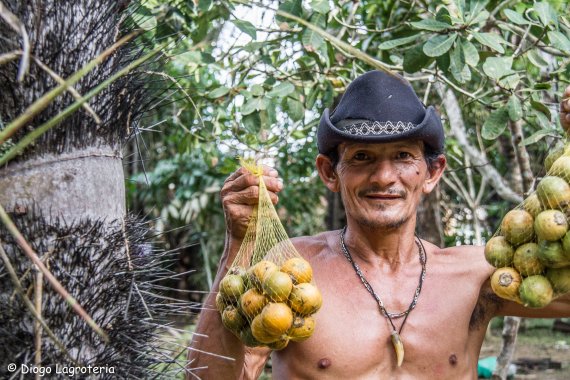<photo: Diogo Legroteria>
The idea that the Amazon region on South America was largely untouched before the arrival of Columbus can be consigned to the dustbin. Indigenous people had domesticated at least 85 tree species before 1492.
So says a study by WUR, Dutch natural history institute Naturalis and the National Institute for Amazon Research (INPA) in Brazil. With this finding, lead author Carolina Levis, a PhD candidate at WUR and the INPA, puts paid to a common prejudice among ecologists that the Amazon region was pristine until the arrival of the Spanish. ‘For years ecological studies have ignored the influence of pre-Columbian peoples on the forest,’ she says. ‘Our results show clearly that the flora in the Amazon is to some extent a legacy of its vanished inhabitants.’
The researchers combined about 1000 forest inventories belonging to the Amazon Tree Diversity Network with maps of more than 3000 archaeological sites in the Amazon region. This enabled them to analyse the composition of the forest at varying distances from past settlements. They concentrated on 85 tree species of which it was known that they were domesticated by Amazon dweller over the past millennia for food, shelter or medicines. These trees include commercial species such as cocoa, acai and Brazil nut. Such species occurred significantly more often close to the archaeological sites, reported the researchers last week in Science.
The researchers also stumbled upon areas of the Amazon with both a high level of biodiversity and large populations of domesticated trees. As an example they cite an area in the southwestern Amazon where the Brazil nut is still the basis of the local people’s livelihoods. But they also found areas where the relationship between domesticated plant species and archaeological sites is less clear. That would require more archaeological research.
The researchers focused on 85 tree species in this study, but indicate that pre-Columbian peoples managed hundreds more of the total of 16,000 tree species in the Amazon. The researchers, including the Wageningen Forest Ecology and Forest Management chair group, are therefore carrying on with research on the ecological footprint of the Amazon-dwellers of the past.

